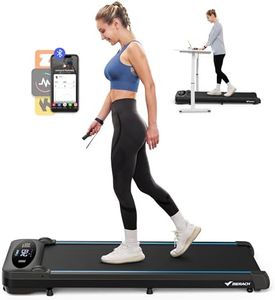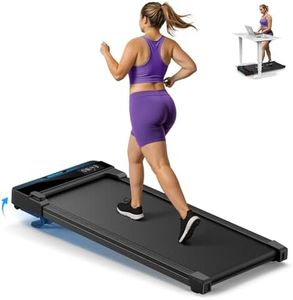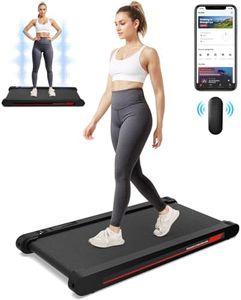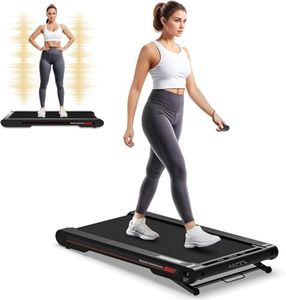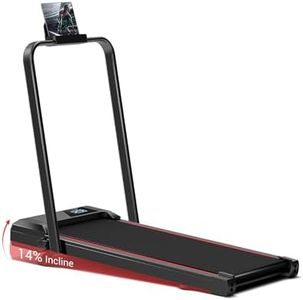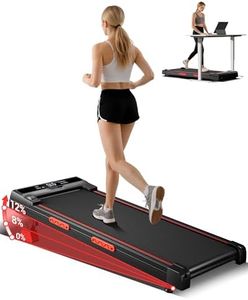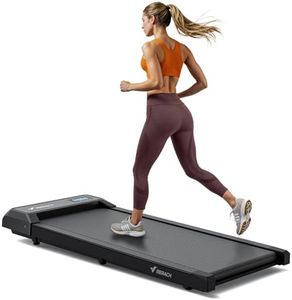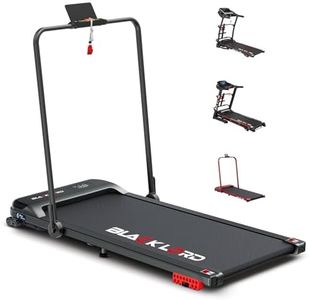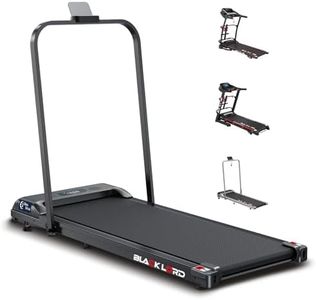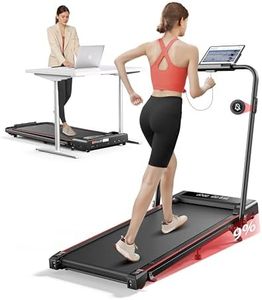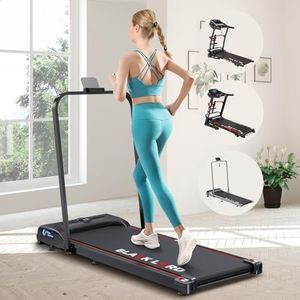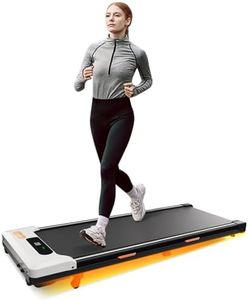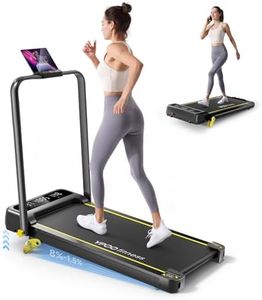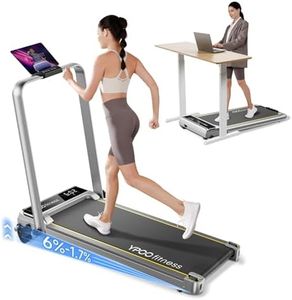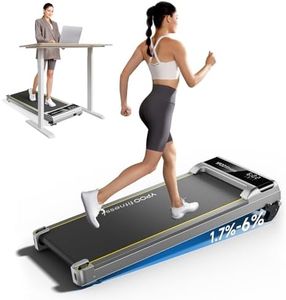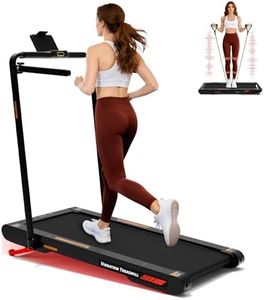We Use CookiesWe use cookies to enhance the security, performance,
functionality and for analytical and promotional activities. By continuing to browse this site you
are agreeing to our privacy policy
10 Best Walking Pads
From leading brands and best sellers available on the web.By clicking on a link to a third party's website, log data is shared with that third party.
Buying Guide for the Best Walking Pads
When choosing a walking pad, it's important to match the product to your lifestyle and intended usage. Walking pads are compact treadmills mainly designed for walking rather than running, making them perfect for home or office environments where space is limited. By carefully considering a few key features, you can find a walking pad that fits your daily routine, desired intensity, and available space. Let's look at the most important specs to help you make the right choice.Maximum SpeedMaximum speed indicates how fast the walking pad can go when set to its highest level. It’s crucial because it determines whether the device can be used for just walking or light jogging. Low-speed options (typically up to 4 km/h) are great for leisure strolls or while working at a desk, while higher speeds (up to 6-8 km/h) allow for brisk walking and even light jogging. Consider how fast you normally walk and whether you plan to increase your walking pace over time. For casual office use, lower maximum speeds are usually enough, but for fitness-focused routines, a higher speed range is more versatile.
Deck SizeDeck size refers to the length and width of the area where you walk on the pad. It's important because a larger deck provides more comfort and allows you to walk naturally without feeling cramped. Smaller deck sizes (around 40 cm wide and 100 cm long) are suitable for smaller spaces and slower walking, while larger decks (over 45 cm wide and 120 cm long) give more freedom, especially for those with longer strides. If you’re tall or want a more relaxed experience, opt for a larger deck. For tight spaces or occasional use, a compact deck works well.
Weight CapacityWeight capacity tells you the maximum user weight the walking pad can safely support. This is important for durability and safe operation. Most walking pads support between 90 kg and 120 kg, while some heavy-duty models can handle more. Always check your weight against the specified capacity to ensure long-term reliability and warranty protection. If you’re near the upper limit, choose a model with a higher weight capacity for better sturdiness.
Portability and StoragePortability and storage features determine how easily you can move and store the walking pad when not in use. Many walking pads are foldable or equipped with wheels for simple movement. If you have limited space or plan to keep the device under a desk or bed, look for models that are lightweight, slim, and easy to fold or roll away. For users who want a dedicated workout space, portability may matter less.
Noise LevelNoise level measures how much sound the walking pad makes during operation, usually described as quiet or low-noise in product descriptions. It’s important if you share your space with others, live in an apartment, or use the pad in a work setting. Quieter models keep disruptions to a minimum. If you require absolute silence, look for reviews and specifications that highlight quiet motors and smooth operation.
Control and Display OptionsControl and display options refer to how you adjust speed and monitor your progress. Some walking pads have remote controls, touch panels, or app connectivity, while displays might show speed, distance, time, and calories burned. If you want easy adjustments while walking, a remote or intuitive touch panel is convenient. For those tracking fitness goals, a clear display or compatible mobile app can be helpful. Think about how much information you need and how often you might change settings mid-session.
